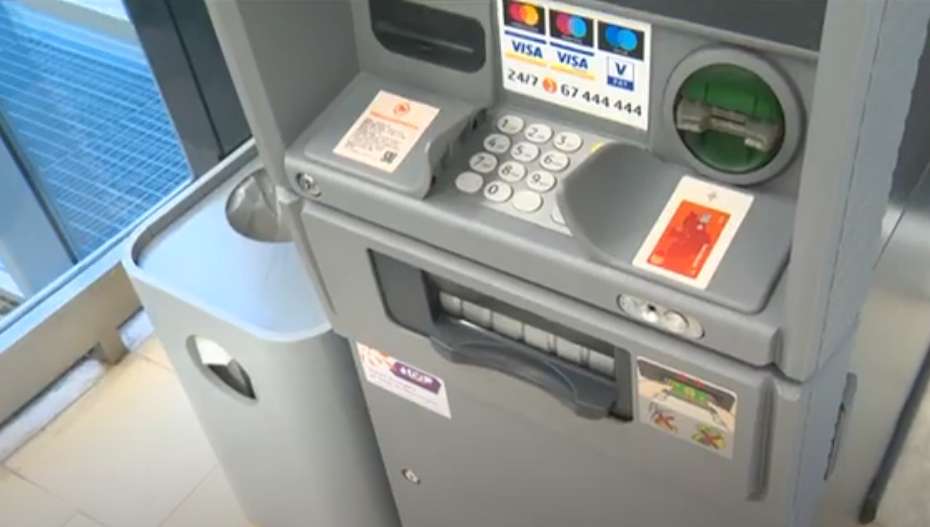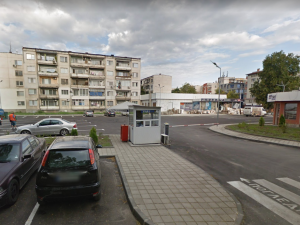Oklahoma Man’s Hearing in Kansas Priest’s Killing Delayed: Justice Awaits in Seneca
Gary Hermesch faces first-degree murder charge in the death of Father Raj B. “Arul” Carasala; community seeks answers as hearing date looms.
SENECA, Kan. – The quest for justice in the tragic shooting death of Father Raj B. “Arul” Carasala has hit a temporary pause. Gary L. Hermesch, 66, of Tulsa, Oklahoma, the man accused of the crime, will have his preliminary hearing pushed back to June 17 at 3:30 p.m.,according to Nemaha County Attorney Brad Lippert.
“That hearing,initially set to take place April 15 for Gary L. Hermesch, 66, of Tulsa, Oklahoma, had been rescheduled by agreement of both parties to be at 3:30 p.m. June 17.”
Nemaha County Attorney Brad Lippert
The weight of intentional and premeditated first-degree murder hangs heavy as Hermesch remains the prime suspect linked to the April 3 death of the beloved priest, Raj B. “Arul” Carasala, 57. The Seneca community, nestled in northeast Kansas, grapples with unanswered questions as the legal process unfolds.
A preliminary hearing serves a crucial function within the American legal system, designed to filter out unwarranted prosecutions. It requires the prosecution to demonstrate that sufficient evidence exists to warrant a full trial. This safeguard is fundamental to protecting individual liberties, ensuring that no one is subjected to the burden and stigma of a trial without a reasonable basis.
In the United States, the concept of probable cause
has deep roots in the Fourth Amendment, which protects citizens from unreasonable searches and seizures. Over time, the Supreme Court has refined the definition of probable cause through landmark cases like Illinois v. Gates (1983), establishing a totality of the circumstances
test. This requires judges to assess all available information to determine whether a fair probability exists that evidence of a crime will be found or that a crime has been committed.
No Motive Revealed, Community Waits
The absence of a publicly stated motive intensifies the unease surrounding Carasala’s death. The priest, known for his dedication and service to the sts. Peter and Paul Catholic Church, was fatally shot at the church rectory. The lack of an apparent reason behind the killing fuels speculation and sorrow within the tight-knit community of Seneca.
Law enforcement agencies across the U.S. often employ similar strategies.For example, during the Boston Marathon bombing investigation in 2013, officials were tight-lipped about specific leads to avoid tipping off the suspects and hindering the search. This approach, while frustrating for the public, is often a necessary measure to ensure a accomplished outcome.
Hermesch held on $1 Million Bond
Hermesch, deemed indigent, is represented by public defender Jason Wayne Belveal. Following his initial court appearance on April 4 in Seneca, he was transferred to the Jackson County Jail in Holton, held on a $1 million bond. Lippert explained that this arrangement was made as a courtesy from Jackson County officials to alleviate strain on Nemaha County’s resources.
Remembering Father carasala
Father Carasala’s journey to Seneca began in 2011, after being invited to serve in the archdiocese by the late Archbishop James P. Keleher. The priest, ordained in 1994, became a pillar of the Sts. Peter and Paul parish. seneca, a town of roughly 2,140 residents located about 75 miles north/northwest of Topeka, is now mourning the loss of a spiritual leader.
“Carasala was invited to come to Kansas to possibly serve in the archdiocese by one of its former archbishops, the late James P. Keleher…”
The legacy of Father Carasala resonates deeply within the parish and his impact is evidenced by the outpouring of grief and remembrance from his parishioners and colleagues. His dedication and service stood as a testament to the community that has been rocked by his sudden and violent passing.
Potential Counterarguments and Legal Considerations
It’s crucial to acknowledge potential challenges in prosecuting cases like this. The defense may argue issues relating to Hermesch’s mental state at the time of the crime, claiming diminished capacity or temporary insanity. Such arguments could significantly affect the outcome of the trial, potentially leading to a lesser charge or an acquittal.
In the United states, the insanity defense is rarely successful. According to the National Institute of Justice, the insanity defense is only raised in about 1% of felony cases, and it succeeds in only about 25% of those cases. Even when successful, the defendant is often committed to a mental institution for an indefinite period.
FAQ: Understanding the Case
| Question | Answer |
|---|---|
| who is the accused? | Gary L. Hermesch, 66, of Tulsa, Oklahoma. |
| What is the charge? | Intentional and premeditated first-degree murder. |
| Who was the victim? | Raj B. “Arul” Carasala, 57, a Catholic priest. |
| When is the next hearing? | June 17 at 3:30 p.m. |
| What is the motive? | Motive is still unknown. |
Archyde News Exclusive: Interview with Legal Analyst on Seneca Priest Murder Case
Analyzing the complexities surrounding the Gary Hermesch case and the upcoming preliminary hearing.
Interview: Delving into the Seneca Priest Murder Legal Proceedings
Archyde News Editor: Welcome, Ms. Eleanor Vance, legal analyst and expert on criminal proceedings. thank you for joining us today to discuss the very sensitive case involving the death of Father Raj B. “Arul” Carasala in Seneca, Kansas, and the upcoming preliminary hearing. Can you give us a general overview of what we can expect?
Eleanor Vance: Thank you for having me. This case is certainly complex, and the preliminary hearing on June 17th will be crucial. it’s the first step in assessing the strength of the prosecution’s case against Gary L.Hermesch. The prosecution will need to present enough evidence to convince the judge that there’s probable cause to believe Hermesch committed first-degree murder.
Understanding Probable Cause and Legal Strategy
Archyde News Editor: The article mentions “probable cause.” Could you elaborate on its significance in this context?
Eleanor Vance: Absolutely. “Probable cause” is a cornerstone of the American justice system. It’s the threshold the prosecution must meet to move the case forward. They need to show the judge that there’s a fair probability that Hermesch committed the crime,based on the evidence they have thus far. This is essentially a mini-trial to determine if a full trial is warranted,safeguarding against unjust accusations.
Archyde News Editor: Given the delay in the hearing and lack of revealed motive, what legal strategies might we anticipate from the defense?
Eleanor Vance: The defense, led by public defender Jason Wayne belveal, will likely focus on challenging the prosecution’s evidence.Without a known motive, they might bring forward that the evidence is circumstantial. They could also explore possible issues with Hermesch’s mental state. These can include arguing diminished capacity or possibly, though less likely with such a charge, temporary insanity. Remember, the insanity defense is a tough one to win, but it could affect the charges.
The Community’s Outlook and Legal Challenges
Archyde News Editor: The community of Seneca is still reeling from the loss of Father carasala. How does the lack of a known motive impact the case,both legally and emotionally?
Eleanor Vance: The lack of a publicly stated motive creates uncertainty. It can fuel speculation and make it more difficult for the community to find closure. Legally, the prosecution will need to build a case without this direct link to the crime. The absence of a motive, while making the case more challenging, doesn’t necessarily mean a conviction is unfeasible, if they can connect the accused to the scene with concrete evidence.
Archyde News Editor: What should the public consider when reviewing the upcoming hearing? What type of evidence is crucial?
Eleanor Vance: The public and media should pay attention to the evidence being presented during the hearing. crucial pieces of evidence might include forensic reports, witness testimonies, any digital evidence gathered, or surveillance footage. It’s a comprehensive assessment to determine if the charge warrants a full trial.
Looking Ahead: The Path to Justice
Archyde News Editor: Assuming the case moves to trial, what are some factors, besides the initial evidence, that could influence the verdict?
Eleanor Vance: The integrity of the evidence presented, the strength of their witnesses, and, as we mentioned before, any evidence the defense offers to challenge the prosecution’s narrative are all critical. The defense will explore any information that undermines the reliability of statements and the validity of the provided evidence. The judge and/or jury will need to be convinced beyond a reasonable doubt to find Hermesch guilty.
Archyde News Editor: This case, as we covered, is obviously extremely sensitive topic, dealing with a tragic situation and many unknowns. How do you anticipate this affecting both the legal team and the community?
eleanor Vance: The legal teams will need to navigate the intricacies of the local community while upholding their professional responsibilities. They’ll need to ensure fairness, accuracy, and respect for the victim and the accused. The community will navigate loss, looking for closure while respecting the legal process. Openness and sensitivity are of great importance.
Concluding thoughts and Reader Engagement
Archyde News Editor: Ms. Vance, thank you for your insightful breakdown of this complex case. Before you go, how would you encourage our readers to view the upcoming legal proceedings?
Eleanor Vance: Stay informed. Research the court procedures. Recognize the presumption of innocence. Remember that justice takes time, particularly when complex legal situations are involved. I encourage readers to approach this challenging case with critical thinking and empathy for all involved.
Archyde News Editor: A thoughtful message, certainly. Now,for our readers: What do you think will be the most challenging aspect of the prosecution’s case in the absence of a clear motive? Share your thoughts in the comments below.








